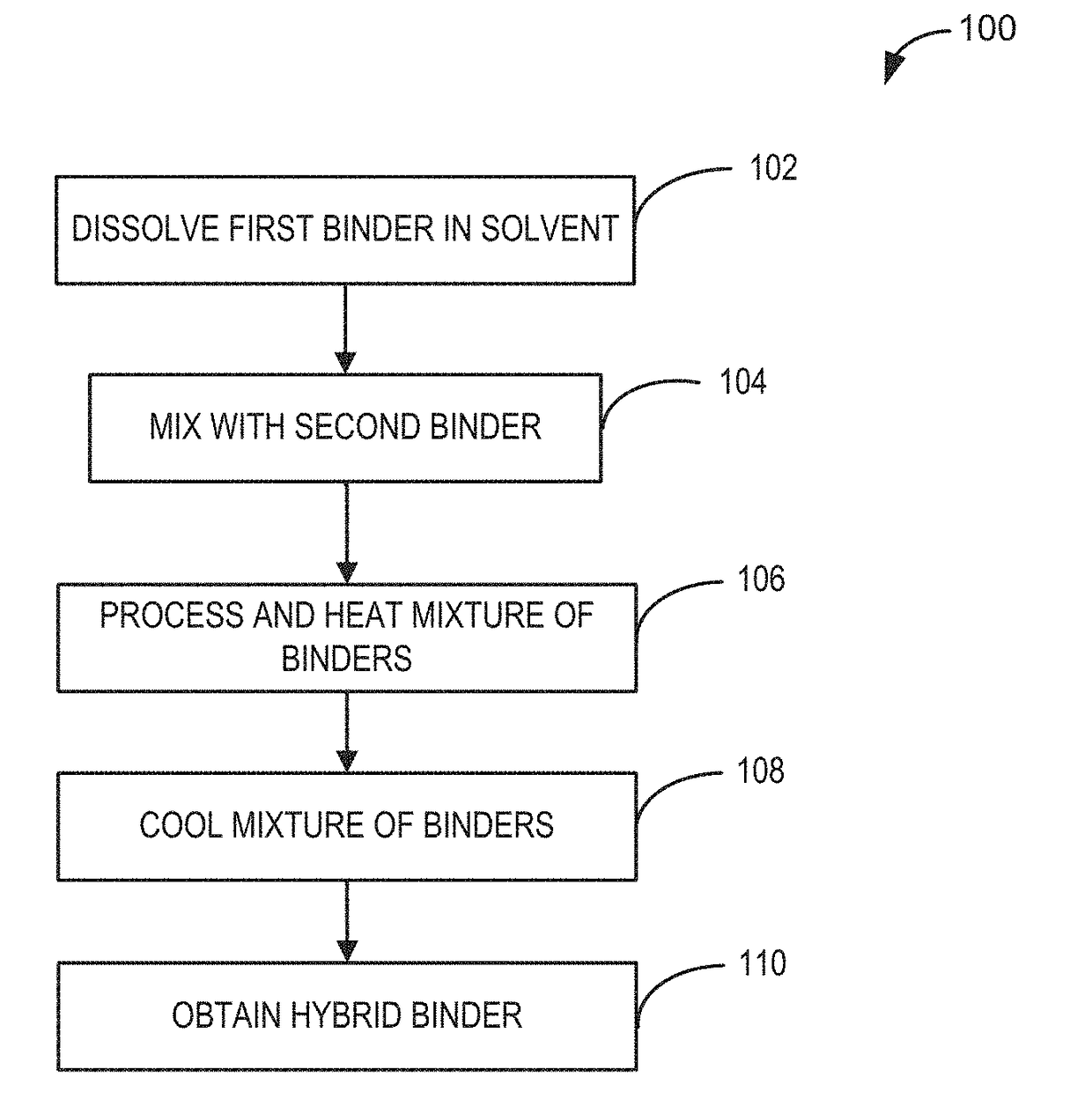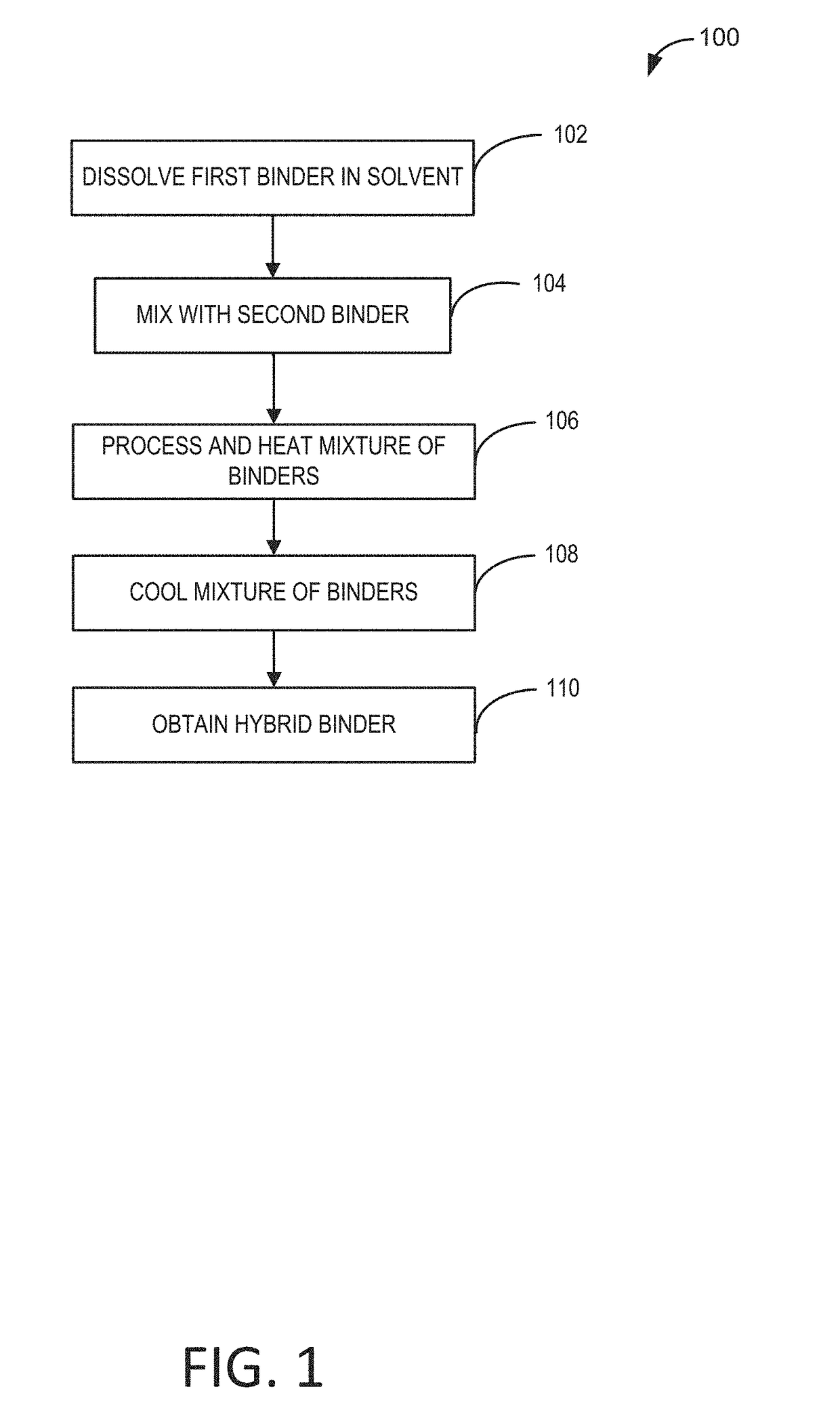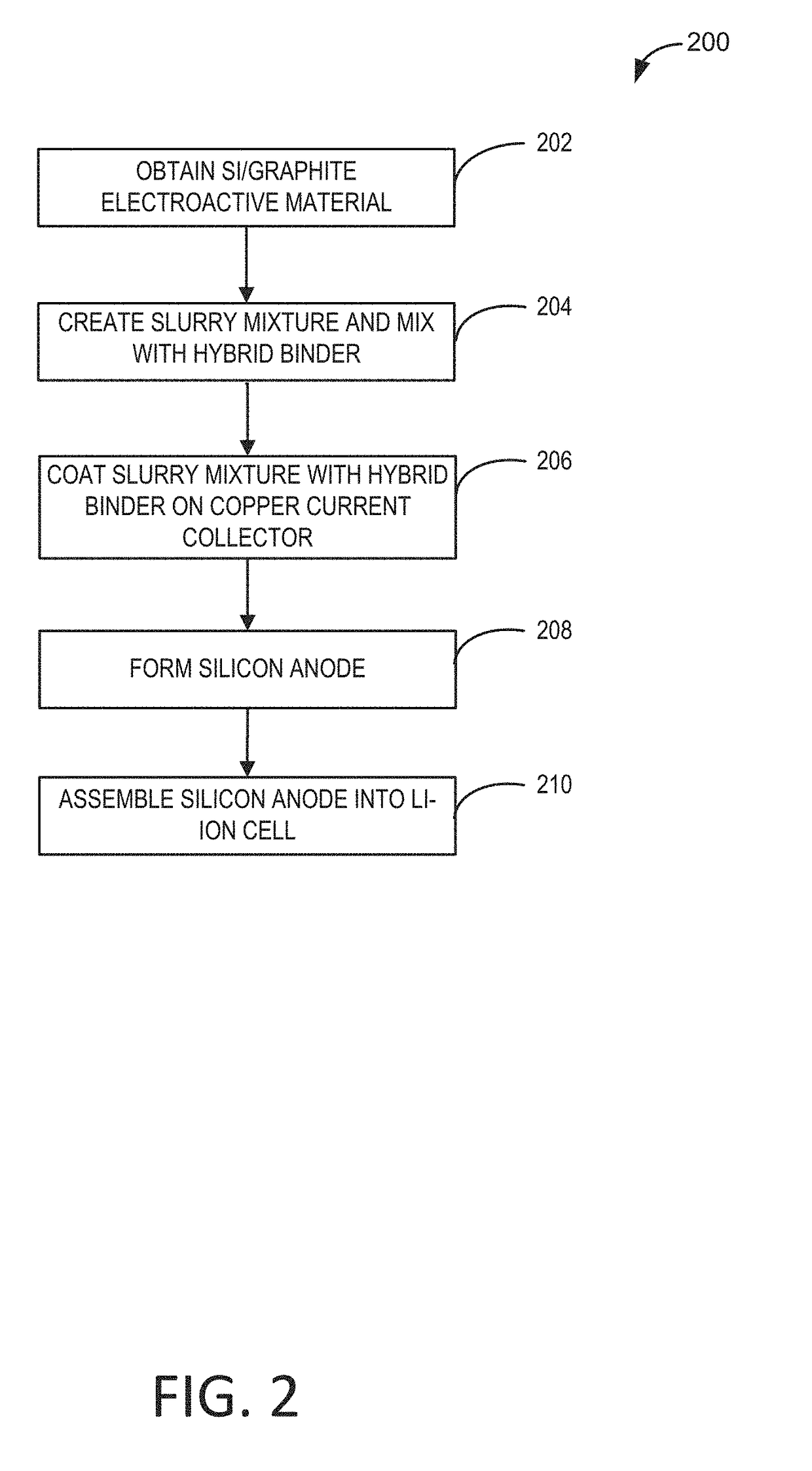High capacity anode electrodes with mixed binders for energy storage devices
a technology of energy storage devices and anodes, which is applied in the field of silicon anodes with hybrid binder fabrication, can solve the problems of reduced cycle life, mechanical damage to the battery structure, and relatively large volume change of silicon, and achieve the effect of reducing the potentially negative characteristics of individual binders
- Summary
- Abstract
- Description
- Claims
- Application Information
AI Technical Summary
Benefits of technology
Problems solved by technology
Method used
Image
Examples
Embodiment Construction
[0017]Aspects of this disclosure will now be described by example and with reference to the illustrated embodiments listed above. Components, process steps, and other elements that may be substantially the same in one or more embodiments are identified coordinately and are described with minimal repetition. It will be noted, however, that elements identified coordinately may also differ to some degree.
[0018]The present application relates to a Li-ion rechargeable battery which comprises a Si anode capable of intercalating and releasing lithium, a positive electrode, a separator, and an aqueous or nonaqueous electrolytic solution consisting of a lithium salt and at least one organic solvent. The Si anode may be fabricated with a hybrid binder, as described in FIGS. 2 and 3, to improve the cycle life of the Li-ion cell. The fabrication of the hybrid binder, as described in FIG. 1, allows for an unexpected combination of a water-based binder and a non-water based binder, for example. T...
PUM
 Login to View More
Login to View More Abstract
Description
Claims
Application Information
 Login to View More
Login to View More - R&D
- Intellectual Property
- Life Sciences
- Materials
- Tech Scout
- Unparalleled Data Quality
- Higher Quality Content
- 60% Fewer Hallucinations
Browse by: Latest US Patents, China's latest patents, Technical Efficacy Thesaurus, Application Domain, Technology Topic, Popular Technical Reports.
© 2025 PatSnap. All rights reserved.Legal|Privacy policy|Modern Slavery Act Transparency Statement|Sitemap|About US| Contact US: help@patsnap.com



